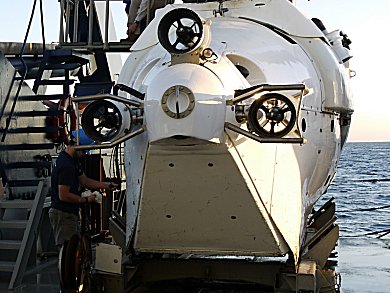Methane is formed under the absence of oxygen by natural biological and physical processes, e.g. in the sea floor. It is a much more powerful greenhouse gas than carbon dioxide. Microorganisms inactivate methane gas before it reaches the atmosphere. It was assumed that the microorganisms take the methane for filling up their energy tanks and use it as a carbon source. They were thought to be heterotrophs.
Scientists from the University of Bremen, Alfred Wegener Institute for Polar and Marine Research, Bremerhaven, and Max Planck Institute for Marine Microbiology, Bremen, all Germany, investigated the thermophilic microorganisms, including anaerobic methane-oxidizing archaea (mainly ANME-1) and sulfate-reducing bacteria (e.g., HotSeep-1 cluster) inhabitating the methane-rich, hydrothermally heated sediments of the Guaymas Basin on the West coast of Mexico.
Growth studies with labeled carbon showed carbon from methane never showed up in the cell material, but carbon from carbon dioxide did.
In the presence of methane, cell material originates from primarily autotrophic microbes.
In the absence of methane, archaeal lipid production ceased and bacterial lipid production dropped by 90 %. The lipids produced by the residual 10 % of the metabolically active bacteria predominantly carried a heterotrophic signal.
The results strongly suggest that the ANME-1 archaea oxidize methane but assimilate inorganic carbon. Thus they should be classified as methane-oxidizing chemoorganoautotrophs.
With this new knowledge studies about the inactivation of methane in nature can be optimized.
Image: US-submersible Alvin waiting for the descent. © M. Kellermann
- Autotrophy as a predominant mode of carbon fixation in anaerobic methane-oxidizing microbial communities,
Matthias Y. Kellermann, Gunter Wegener, Marcus Elvert, Marcos Yukio Yoshinaga, Yu-Shih Lin, Thomas Holler, Xavier Prieto Mollar, Katrin Knittel, Kai-Uwe Hinrichs,
Proc. Nat. Acad. Sci. 2012.
DOI: 10.1073/pnas.1208795109



